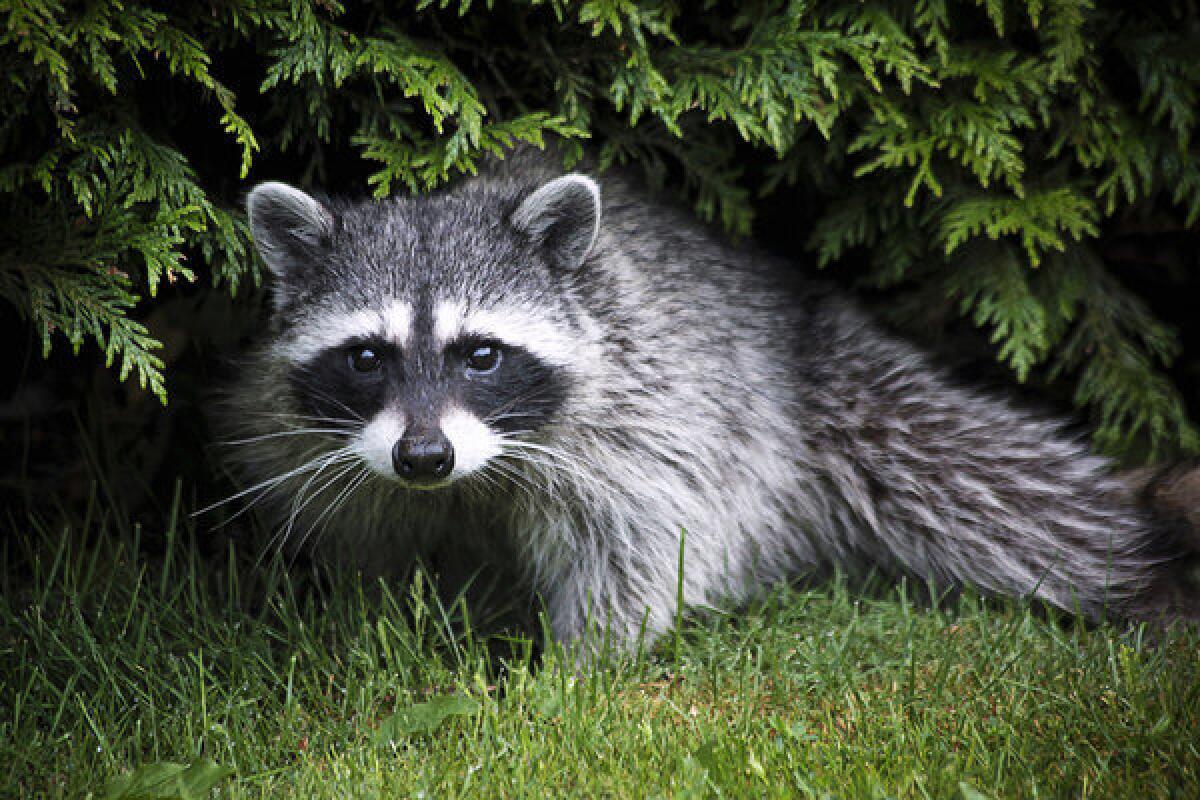Raccoons digging up new sod? Try netting, patience and prayer

Ever had raccoon dig up your lawn? Melanie Polinger of Manhattan Beach is feeling your pain. She wrote into our SoCal Garden Clinic to say:
“We replaced our backyard lawn with Marathon sod in December and the raccoons in the area have been rolling it up to hunt for grubs and worms almost daily. I return the sod to its original position, but I don’t know how long the grass will be able to take this rotten treatment by the raccoons.
“I have sprayed our surrounding walls with rodent/raccoon spray and sprinkled raccoon repellent around the perimeter of the grassy area. The problem seems to have gotten worse since I used the repellent. Any suggestions?”
For an answer, we turned to Alan Uchida, a third-generation nurseryman at Bellefontaine Nursery in South Pasadena. Uchida writes:
“There seems to be an epidemic of this. I sold five pallets of sod in late summer to a South Pasadena resident, and he said he has redone the lawn three times because a family of raccoons invaded his garden.
“Raccoons could very well be the most frustrating obstacle to growing a new lawn. Some gardeners become obsessive and actually lose sleep over keeping these mischievous nocturnal critters away from fresh sod. Grubs and worms are caviar to them. Because raccoons are creatures of habit, they will repeatedly come back and make a mess of the garden.
“I have had clients who sprayed their yard with repellent that ultimately did not work. Others have tried motion-activated water sprays, but the raccoons acted as though they liked the cool spritz. Still others have tried something called the Havahart trap, billed as humane way to control animals, but it caught the neighbor’s cat instead of the raccoon.”
Some raccoons are strong enough to pry open trap doors and escape. And if you are successful in trapping the animal, then what? In a subsequent phone conversation with Polinger, we learned that she had investigated trapping through her city ($150 per cage) only to discover the policy was to release captured animals somewhere else within city limits — possible just a few blocks from her home.
A dog that barks at intruders can sometimes entice raccoons to move along, but Polinger said a brazen raccoon actually entered her house through the dog door and opened her cupboard for a snack.
One possible solution: Stretch out and peg down Ross fruit tree netting — available at garden centers and online through Amazon, Sears and other sources — over the entire lawn area. The downsides: The netting must be removed before each mowing and put back on afterward, and homeowners must be confident that pets won’t try to eat the netting, which, like dental floss and other household detritus, can be dangerous if ingested.
But if you can try the netting approach, sooner or later the worms and grubs will deplete, the roots of the sod will anchor, and the raccoons will move on. That next location may be another spot in your garden, but we’ll leave that discussion for another time. If you can get the sod to anchor tightly, you may have to live with the netting for just one to two months.
We welcome readers’ gardening questions, design or otherwise, at home@latimes.com. Because of the volume of mail we receive, we can respond only to inquiries selected for publication.



